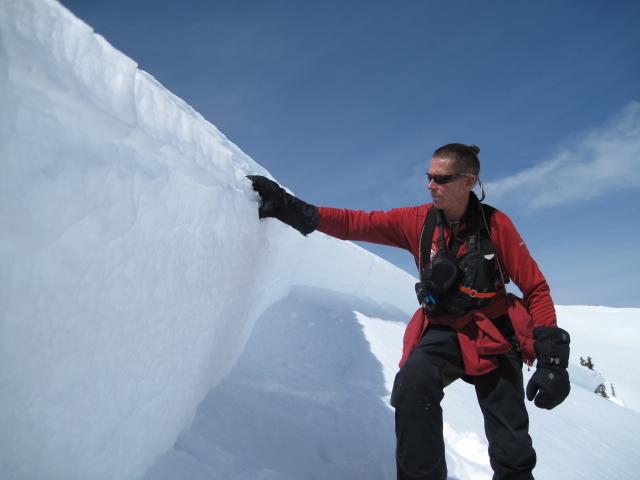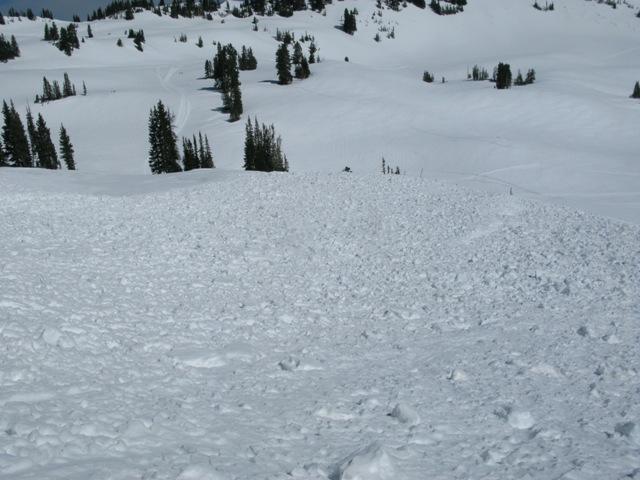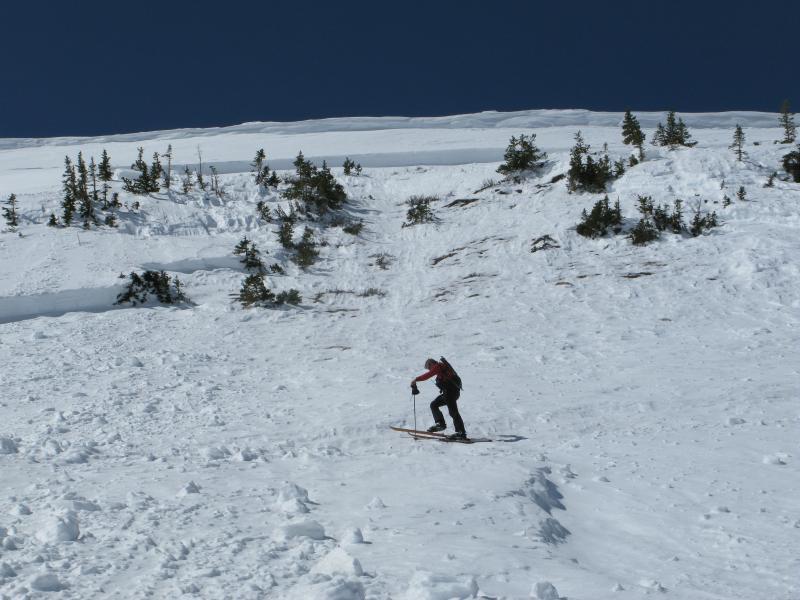The western Uinta's have remained thin all season and the pack never really recovered from the very cold temps during the January dryspell. As a matter of fact, record cold temperatures not only helped accelerate the faceting process, they also preserved early season weak snow. Light density snow storms did little to add weight or compression and the shallow pack sustained a strong temperature gradient through much of the winter. Adding insult to injury, a series of post frontal East and Northeast wind events, hampered the upper elevation terrain from developing a deep snowpack. In essence, the Uinta's never turned the corner with snow stability this season and now they're getting the first real load of the season.
March can often be a good snow month for the Uinta's and this year winter returned from its hiatus early in the month, only to be interuptted by record warm temperatures on March 14th and 15th. While a wet slab cycle ensued on a handful of steep, rocky slopes, the range hardly came unglued. Basically there was no slab. The third week of March however signaled a return of winter as a series of storms piled up 2 feet of snow with little wind. Intermittent warm temperatures allowed the storm to to settle, but as it did a four finger slab formed. Where the pack was thin and shallow we saw an interesting snowmobile triggered slide break into old snow on the 25th. Detailed info can be found here-
Sealing the deal was a one-two punch- the April Fools storm that delivered 14" of snow with over 1.5" H2O and temperatures rapidly rising from 27 degrees to 44 degrees within two hours on the morning of April 3rd.
The connectivity of the slab is impressive. This is the widest slide I've seen break in the range in the past decade. A Continental snowpack keeps you on your game and the Uinta's are always a learning experience. The crown averaged 30", 4' at it's deepest.... 12" at it's shallowest.
Ted and I investigated a rather large natural avalanche in Superbowl. Looks like the slide was triggered by rollers off the cornice which then fanned out, triggering a shallow sluff, then quickly breaking into weak depth hoar on a steep rocky breakover. The slide was off to the races once initiated.








